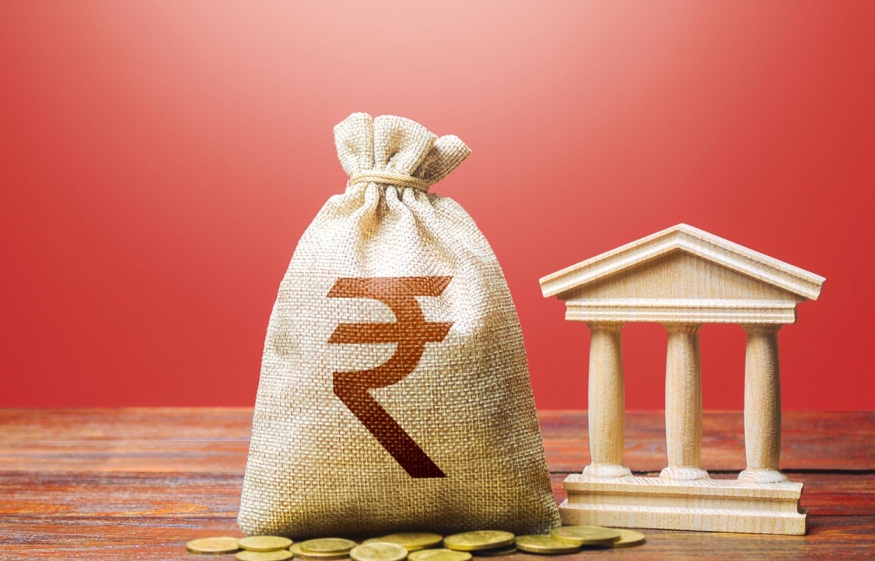Quick Loans in India Made Easy – The Role of Instant Loan Apps in 2025
5 min read
In a country like India, where financial emergencies don’t arrive with a warning, the demand for fast, accessible credit has never been greater. Whether it’s a last-minute medical bill, an urgent home repair, or a sudden travel requirement, people often find themselves scrambling for funds. Until a few years ago, navigating the traditional loan system was akin to running a marathon—long queues, reams of paperwork, and endless waiting. But 2025 tells a different story. The borrowing landscape has shifted gears dramatically with the rise of the instant loan app, empowering individuals across income groups and geographies to meet their financial needs swiftly.
Today, getting a loan doesn’t require bank visits or countless follow-ups. All it takes is a smartphone, basic documents, and a few taps. These digital platforms are rewriting the rules of personal finance, making quick loans more accessible, inclusive, and borrower-friendly than ever before.
The Changing Expectations Around Borrowing
Let’s face it—life doesn’t wait. In the past, taking a loan was often a measure of last resort, and the borrowing process could be cumbersome and time-consuming. Traditional lenders leaned heavily on rigid eligibility criteria, fixed office hours, and manual verifications, making it tough for many to access credit quickly. Often, individuals with no credit history, freelancers, or those working in the informal sector were left out of the equation.
Cut to 2025, and the expectations of borrowers have transformed. People now want convenience, speed, and control—without compromising on transparency. They want to know their eligibility upfront, compare interest rates on the go, and receive funds when they need them, not after days of waiting. And this is where the modern instant loan app bridges the gap with remarkable efficiency.
Fast, Paperless, and Available 24×7
One of the most compelling reasons behind the surge in quick loan disbursals is the entirely digital process. From application to approval, everything happens online—no more scanning documents at a photocopy shop or chasing bank officials for status updates.
Instead, borrowers can upload essential documents such as Aadhaar, PAN, and income proof directly through the app interface. Advanced verification tools check the data instantly, allowing approvals to be granted within minutes. This streamlined experience is particularly helpful during emergencies, where time is of the essence. And with platforms operating round-the-clock, users can apply for loans even at odd hours, without being bound by business days or working hours.
Widening Access to Credit Across India
Another critical aspect of the instant loan ecosystem is its contribution to financial inclusion. Rural and semi-urban borrowers, who were historically underserved by formal lenders, are now within reach of credit thanks to improved smartphone penetration and internet access. These apps do not restrict themselves to metro cities alone—they cater to Tier 2 and Tier 3 regions where the demand for small-ticket loans is rising sharply.
Moreover, the use of alternative credit scoring mechanisms has enabled a more inclusive approach. While traditional lenders rely on credit history and income statements, instant loan apps factor in other behavioural indicators—such as mobile usage patterns or transaction history—offering fair opportunities even to first-time borrowers.
Tailored Loan Offers and User Flexibility
In a market as diverse as India’s, one-size-fits-all doesn’t work. Fortunately, loan products in 2025 are more customised than ever. Borrowers can choose the loan amount, tenure, and repayment schedule based on their individual needs and cash flow.
Some prefer a short-term loan for a specific expense, while others opt for longer durations to reduce EMI burden. Many platforms also allow early repayment without hefty penalties, giving users more control over their financial commitments. This flexibility is critical in building trust and encouraging responsible borrowing habits.
Another noteworthy change is the rise of micro-loans—small ticket loans ranging from ₹5,000 to ₹50,000—which are ideal for daily or unplanned needs. These bite-sized loans are gaining popularity among students, gig workers, and homemakers who require quick financial support without the complexities of traditional loans.
Transparent Terms and Borrower Education
The fear of hidden charges and ambiguous clauses has always deterred many from taking loans. But the instant loan model is designed to eliminate such surprises. Loan terms—such as interest rates, processing fees, prepayment rules, and late payment penalties—are presented upfront in clear, understandable language.
This level of transparency helps borrowers make informed decisions without second-guessing. Additionally, many platforms have integrated educational tools, financial tips, and EMI calculators within their interface to encourage users to borrow wisely. These small but significant features contribute to improving financial literacy and ensuring that individuals do not borrow beyond their means.
Tech-Powered Lending and Risk Management
Behind the scenes, the success of instant loan apps lies in robust technological infrastructure. Artificial intelligence and machine learning are being used to assess risk profiles, detect fraudulent applications, and even forecast repayment behaviour. These data-driven insights allow lenders to issue loans with confidence while keeping interest rates reasonable.
At the same time, borrowers benefit from faster decisions and lower rejections. Smart algorithms can also recommend loan products best suited to a user’s financial profile, further simplifying the experience. In the long run, this intelligent matchmaking between borrowers and lenders is what sets the modern digital lending ecosystem apart from legacy models.
A Few Cautions Worth Noting
While the growth of quick loan services is promising, borrowers must exercise caution. The ease of access can sometimes encourage impulse borrowing, leading to multiple debts piling up. It’s important to assess one’s ability to repay before availing a loan, no matter how small the amount.
Also, users must verify the legitimacy of the platform they are borrowing from. In recent years, a few unregulated lenders have taken advantage of unsuspecting borrowers, offering loans with unreasonable interest rates and aggressive recovery practices. Checking for registration with RBI-approved NBFCs or banks is always a wise step.
Data privacy is another consideration. Since the lending process relies on personal data and financial information, users should only engage with platforms that have clear, trustworthy privacy policies and robust security practices in place.
What the Future Holds for Instant Loans
As India continues its journey towards becoming a digitally empowered economy, the role of quick loan disbursal platforms will only grow stronger. With improvements in infrastructure, policy regulation, and user awareness, the instant loan app will become a mainstay of personal finance—not just in urban centres but across the heartlands.
There’s potential for further innovation—such as voice-enabled application processes in regional languages, integration with government benefit schemes, or AI-driven financial coaching—to make credit access even more seamless and meaningful. In the coming years, we might see instant loans being used not just for emergencies but also for aspirations like education, skill development, and entrepreneurship.
Conclusion: Empowering the Borrower, One Loan at a Time
The digital transformation of lending in India has unlocked doors that were previously closed to many. What began as a convenience has now become a necessity. The ability to secure a loan in minutes—without running pillar to post—is empowering individuals to manage their lives better, with dignity and confidence.
In 2025, instant loan apps are not just about speed—they represent a smarter, more inclusive way of meeting financial needs. As long as borrowers stay informed, use the services responsibly, and choose platforms wisely, this evolution in lending will continue to be a positive force in India’s financial landscape.






